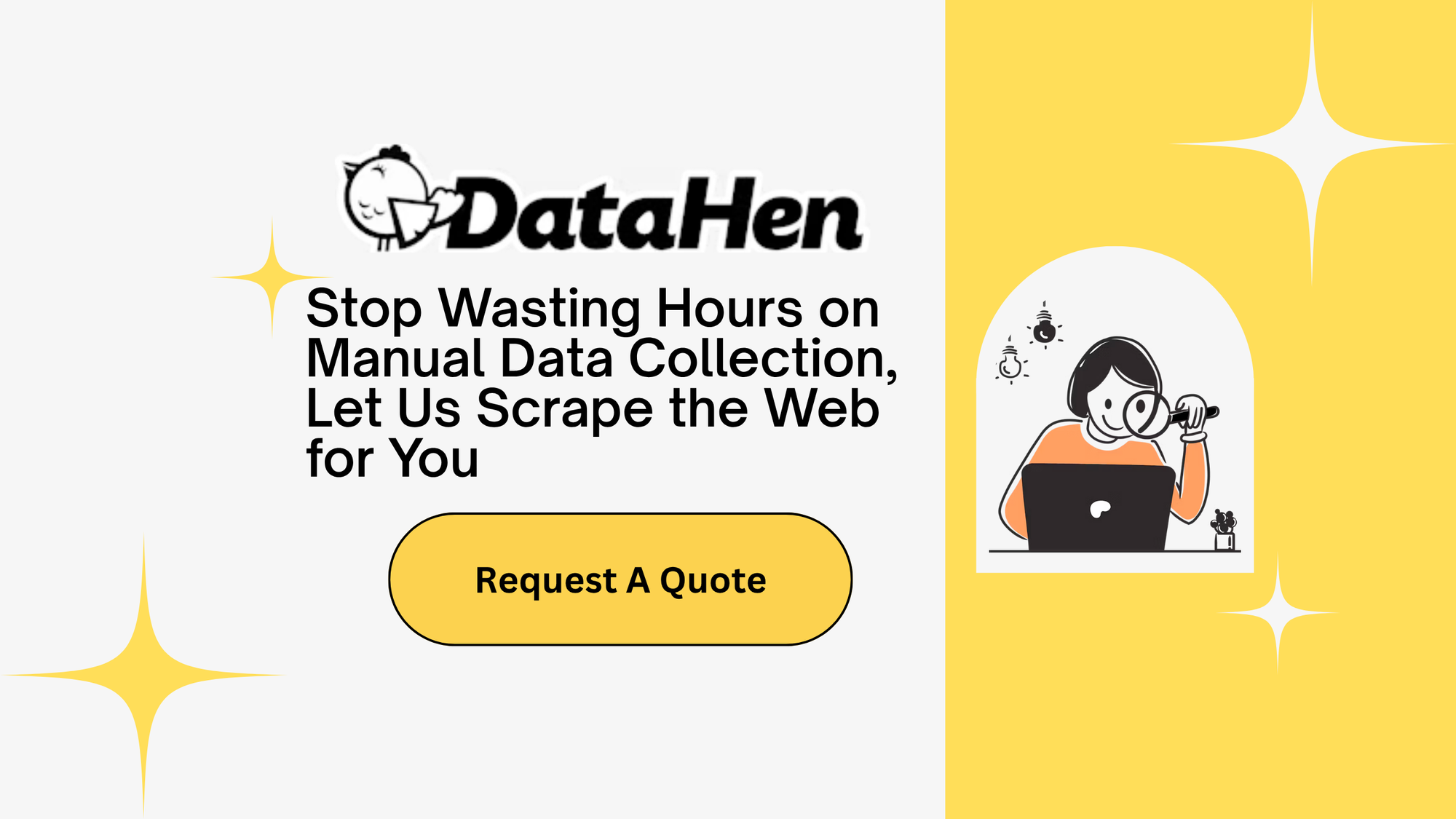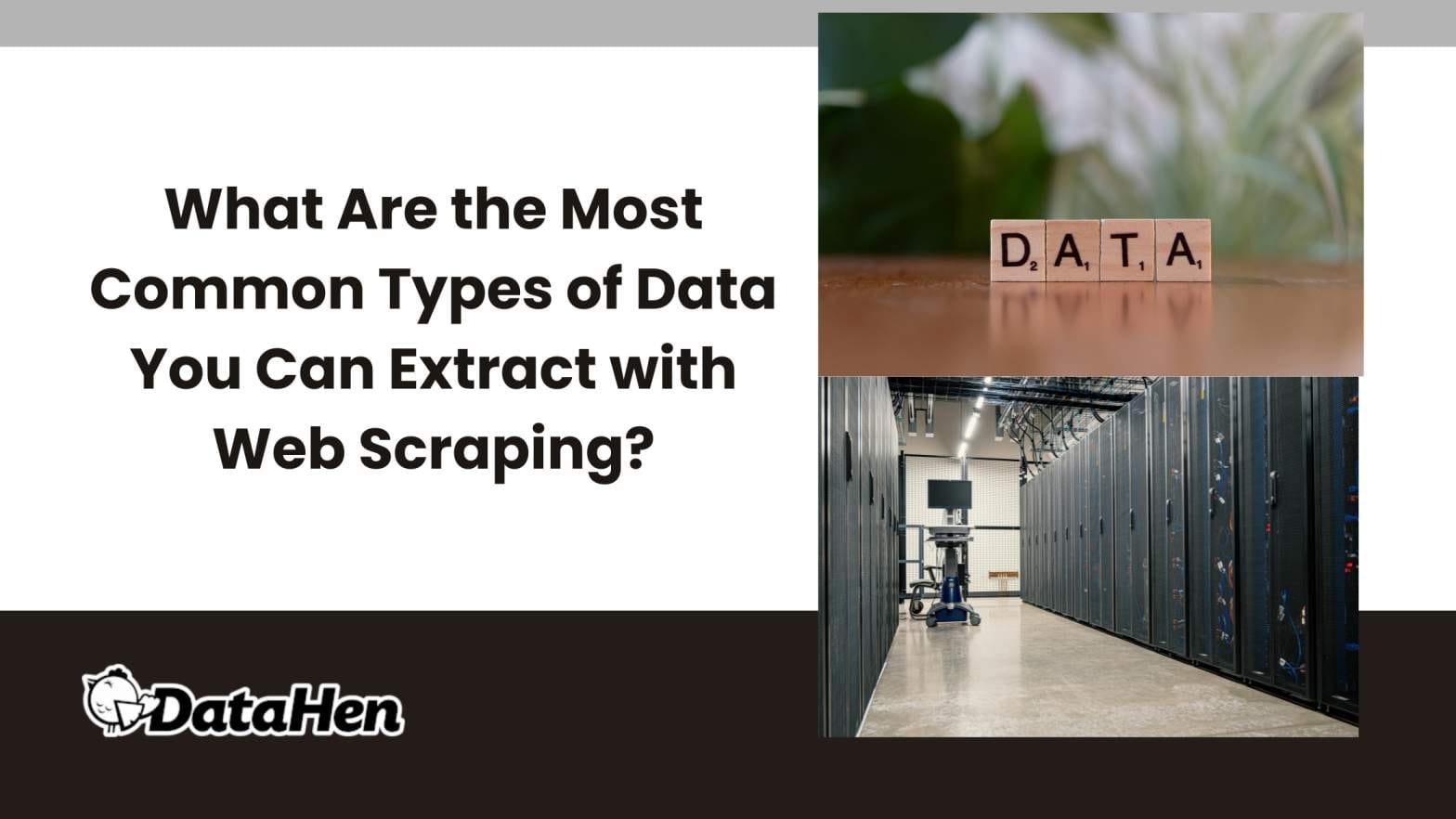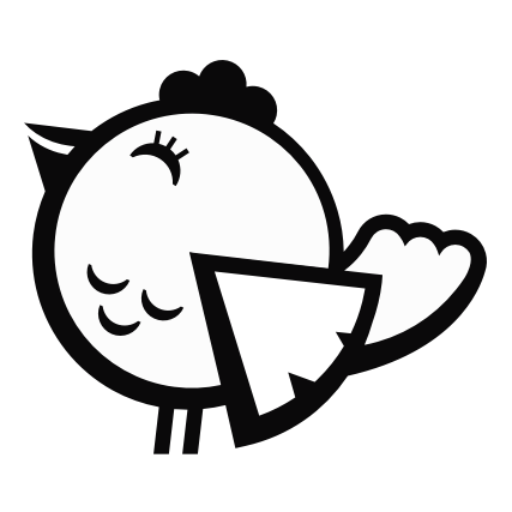The internet has all the information of the world but it’s buried under unstructured content, dynamic pages, and endless HTML.
Web scraping helps us extract, structure, and analyze that data at scale.
But what kinds of data can you actually scrape?
In this guide, we’ll break down the most common web scraping data types, explain how businesses use them, and show you which ones to avoid.
What Is Web Scraping and Why It Matters
Web scraping is the automated process of extracting information from websites.
It is basically turning information available on web pages into structured, usable datasets.
Most businesses use web scraping for various reasons, some of which are:
- Market research: monitoring competitors and trends
- Pricing intelligence: adjusting prices in real time
- Lead generation: collecting business data ethically
- Data aggregation: building large-scale datasets for AI or analytics
Curious why web scraping is so widely used? Read why businesses use web scraping to collect data.
The Most Common Web Scraping Data Types
Web scraping allows you to extract a wide range of data from websites, from text and media to structured metadata. Below are the most common categories of web scraping data, each with practical examples and typical use cases.
1. Text-Based Data
Text is the backbone of the web, and also the most commonly scraped form of data. It comes in multiple shapes and structures, each valuable in its own way.
Plain text
This includes product descriptions, blog articles, news headlines, reviews, and comments, essentially, any visible text that forms part of a webpage’s content.
We often see clients in e-commerce scrape product reviews to analyze customer sentiment or identify trending complaints about a competitor’s product line.
When collecting user-generated content, such as Reddit threads, check out our guide on how to scrape Reddit posts, subreddits and comments.
Structured text
Structured text is text that lives in a consistent, machine-readable format, such as within HTML tables or specific tags. Examples include product specs (price, weight, dimensions), item lists, or pricing tables.
For instance, a real estate analytics firm might extract tabular data from listing pages, price, area, number of bedrooms, to track market trends over time.
Code and markup
This includes HTML, CSS, and JavaScript code, or even Markdown documents. Developers and analysts often scrape markup to analyze site structure, audit SEO changes, or rebuild dataset layouts for testing.
I’ve personally used scraped HTML to track how large e-commerce brands change their page structures after seasonal sales.
2. Media Files
Visual and downloadable content adds another dimension to data extraction. Many businesses underestimate how valuable scraped media data can be for analytics, machine learning, or content management.
Images
Product photos, infographics, or profile images can be collected and cataloged. These help in building visual search models, image comparison tools, or even brand compliance systems that detect unauthorized logo use.
Videos
Scraping embedded video URLs or hosted video metadata (like titles or thumbnails) is useful for media monitoring or content trend analysis.
For example, a marketing team might track which YouTube videos a competitor embeds on their landing pages to gauge campaign focus.
PDFs and other documents
From annual reports to technical manuals, scraping document links (or their text content) unlocks structured knowledge that’s often buried deep within a site.
A client in finance, for example, routinely scrapes PDF filings from government portals for financial disclosure analysis.
3. Structured Data Formats
The web also contains hidden data that’s not visible to users but perfectly structured for machines.
JSON (JavaScript Object Notation)
Found in APIs or embedded <script> tags, JSON is one of the easiest formats to parse. It’s the go-to format for extracting well-organized data like product catalogs, event listings, or stock prices.
XML (Extensible Markup Language)
You’ll find XML in RSS feeds, sitemaps, and enterprise integrations. Scraping XML data allows aggregators to collect consistent, structured feeds with minimal cleanup.
For projects that rely on rotating IPs or multiple sources, learn the difference in our in-depth guide to static vs. rotating proxies.
CSV (Comma-Separated Values)
Although CSV files are typically downloadable rather than rendered in-browser, scraping or automatically fetching linked CSV files lets analysts pull raw datasets at scale, ready for immediate analysis.
4. Navigational and Metadata
Not all useful data is visible on the surface sometimes the real gold lies in the links and metadata that describe a site’s content.
Links and URLs
Scraping URLs helps with site mapping, discovery, and data enrichment. For instance, a crawler may extract all product URLs from a fashion retailer’s sitemap to ensure comprehensive coverage during scraping.
Metadata
Metadata such as page titles, meta descriptions, keywords, or header tags can reveal how competitors position their pages for SEO.
In one project, we used metadata scraping to identify emerging keyword themes in a competitor’s blog before they started ranking for them.
5. Other Specific Data Types
Some types of data are niche but extremely valuable when captured responsibly and ethically.
Contact information
Emails, phone numbers, and business addresses are often scraped from directory sites or company listings.
Used properly (and legally), this supports B2B lead generation and market mapping efforts.
Social media data
Public profile data, posts, hashtags, and engagement metrics can help brands analyze sentiment, track campaign performance, or discover influencers.
Geolocation data
Webpages often contain location details, such as embedded map coordinates or store addresses.
Scraping these enables geo-targeted market research, for example, mapping restaurant density in specific neighborhoods.
Putting It All Together
Whether it’s raw text, structured feeds, or multimedia, each data type has its place in the modern web data ecosystem.
Understanding which type fits your use case can help you design more efficient, compliant scraping strategies and avoid wasting resources on unstructured or irrelevant content.
Structured vs. Unstructured Data in Web Scraping
When we talk about “types” of web data, there’s another dimension worth understanding, how the data is organized. In web scraping, this comes down to structured vs. unstructured data.
Both have their place, but they behave very differently once you start parsing, storing, or analyzing them.
What Is Structured Data?
Structured data is any information that follows a predictable, organized format, like rows in a table or key-value pairs in JSON.
If you’ve ever scraped an e-commerce site and received data neatly sorted into columns (product name, price, SKU, rating), that’s structured data. It’s the cleanest and most machine-friendly format for extraction.
Examples of structured data:
- HTML tables listing product attributes
- JSON responses embedded in
<script>tags - XML feeds or sitemaps
- CSV or database exports
Because structured data has clear labels and delimiters, it’s easy to integrate directly into databases, dashboards, or machine learning models.
For instance, one of our clients in retail used structured price and inventory data to power a real-time pricing intelligence tool across hundreds of online stores.
What Is Unstructured Data?
Unstructured data is everything that doesn’t fit neatly into rows and columns. It’s messy, human, and context-heavy but often the most insightful.
This includes things like:
- Product reviews and comments
- Blog articles and news stories
- Images, PDFs, and videos
- Social media posts
The challenge with unstructured data is that it requires processing before it becomes usable. You might need natural language processing (NLP) to extract meaning from text, or computer vision to tag and categorize images.
Businesses often turn conversation data into actionable insights, see how in Turning conversation data into insight: a practical guide for beginners.
We’ve seen companies use unstructured review data to uncover hidden customer pain points or to perform competitive sentiment analysis at scale.
It’s less about clean numbers, more about patterns and emotions.
What is Semi-Structured Data?
Between the two lies semi-structured data, data that has some organizational elements but doesn’t conform to a rigid schema.
Examples:
- HTML pages (consistent tags, but inconsistent content placement)
- Email headers or forum posts
- Event listings with variable field formats
A typical example is a news site where every article follows the same HTML layout, but metadata like “author” or “tags” appear inconsistently depending on the publication date.
APIs often expose data in structured formats — see our post on common API integration issues and solutions.
Semi-structured data is usually parsed with a mix of rule-based extraction and flexible parsing tools like XPath or CSS selectors.
How to Handle Structured vs. Unstructured Data?
The key difference isn’t just in how the data looks, it’s in how you process and store it afterward.
| Type | Characteristics | Best Uses | Common Tools |
|---|---|---|---|
| Structured | Organized, predictable, consistent fields | Dashboards, price tracking, lead databases | SQL, Excel, APIs |
| Semi-Structured | Some patterns, inconsistent fields | Content aggregation, listings, job boards | Python, BeautifulSoup, JSON parsers |
| Unstructured | Free-form, text-heavy, multimedia | Sentiment analysis, AI model training | NLP models, computer vision, text mining |
In short:
- Structured data = fast insights
- Unstructured data = deep insights
- Semi-structured data = balance between the two
The best scraping strategies often combine all three.
Real-World Examples of Web Scraping Data in Action
It’s one thing to talk about what types of data you can scrape — it’s another to see how businesses actually use them in the real world.
We’ve seen organizations across industries transform web data into actionable intelligence. Below are some of the most common and impactful applications of scraped data.
E-commerce: Dynamic Pricing and Product Intelligence
Retail is a battlefield of numbers, and web scraping gives you the competitive edge.
E-commerce brands regularly scrape product titles, prices, availability, and reviews to monitor how competitors are positioning themselves in real time.
It’s a real-world example of web scraping turning raw HTML into revenue optimization.
Many retailers rely on competitor price scraping to monitor and adjust pricing in real time.
Real Estate: Market Insights and Property Trend Analysis
Real estate platforms thrive on data consistency, but property information is scattered across thousands of listings.
By scraping property details, price, size, location, number of bedrooms — analysts can build comprehensive datasets for market forecasting.
We worked with a Canadian real estate analytics firm that scraped thousands of listings weekly to track regional price fluctuations.
By visualizing this scraped data, they were able to identify emerging buyer hotspots months before official reports confirmed them.
Finance: Alternative Data for Market Signals
In finance, speed and context mean everything.
Investors and analysts use scraping to gather alternative data, non-traditional indicators like news sentiment, job postings, or company announcements — to detect early market shifts.
A financial intelligence company, for instance, scraped corporate press releases and SEC filings to identify patterns in how companies communicate before major events.
Pairing that unstructured text data with stock movement data helped them develop an algorithm that flagged potential earnings surprises.
Recruitment: Labor Market and Skill Analytics
Job boards are goldmines of public data.
Scraping job titles, locations, required skills, and salary ranges provides a living snapshot of the labor market.
Hospitality and Travel: Competitive Rate Monitoring
In the travel industry, prices change faster than you can pack a suitcase.
Hotels and travel aggregators scrape room rates, availability, and reviews from competitors to dynamically adjust their own pricing models.
Media and Research: Content Aggregation and Sentiment Tracking
Web scraping also fuels content discovery and trend analysis.
By scraping news headlines, article metadata, and publication timestamps, analysts can build real-time feeds of emerging topics.
A data journalism team, for example, used scraping to collect climate-related articles across international news outlets.
They then ran sentiment analysis on the headlines to understand how public tone toward climate policy changed over time.
It’s a reminder that sometimes the story behind the headlines lives in the data itself.
Business Intelligence: Cross-Domain Data Fusion
The most powerful insights often come from combining multiple data types.
In one project, we helped a retail intelligence company merge structured product data (from e-commerce pages) with unstructured social sentiment data (from reviews and forums).
The result was a dashboard that didn’t just track what was selling, but why.
By correlating positive sentiment trends with sales velocity, they were able to predict future bestsellers with surprising accuracy.
Example Table: Industries and Their Scraped Data Types
| Industry | Commonly Scraped Data | Use Case |
|---|---|---|
| E-commerce | Product details, pricing, reviews | Competitive pricing, trend analysis |
| Real Estate | Property listings, agent details | Market forecasting, regional comparison |
| Finance | News articles, filings, stock data | Market sentiment, predictive signals |
| Recruitment | Job postings, salary data | Labor analytics, skill demand tracking |
| Travel | Room rates, flight data | Dynamic pricing, deal aggregation |
| Media | Headlines, article metadata | Trend detection, content curation |
What These Examples Have in Common
Across industries, successful web scraping isn’t about collecting everything.
It’s about targeting the right data, ensuring it’s structured properly, and staying compliant with data ethics and platform policies.
Every project we deliver at DataHen follows that philosophy, clean data, clear value, and complete transparency.
What Data Should Not Be Scraped
Web scraping opens incredible possibilities — but not all data on the internet is fair game.
We take a firm stance: just because data is technically accessible doesn’t mean it’s scrapable.
Responsible scraping protects not only your business but the broader data ecosystem we all rely on.
Learn how to check if a website allows for web scraping.
1. Private or Login-Protected Data
If a website requires users to log in before viewing certain information, that data is not public.
This includes:
- Personal account dashboards
- Private messages or user profiles
- Internal business portals or SaaS platforms
Accessing or scraping behind authentication walls without permission violates most terms of service — and, in some cases, data protection laws like GDPR or CCPA.
We never scrape behind login pages unless a client provides explicit authorization and owns the data source.
2. Personal Identifiable Information (PII)
PII refers to any data that could identify an individual person — such as names, email addresses, phone numbers, or physical addresses.
Even if that data is technically visible on a public page, scraping and storing it for commercial use without consent crosses an ethical (and sometimes legal) line.
For example:
- Scraping social media profiles with full names and contact info
- Collecting email addresses from comment sections or directories
- Harvesting contact forms
We strictly avoid PII scraping unless it falls within legitimate, compliant business purposes, such as internal company directory synchronization or publicly consented datasets.
3. Copyrighted or Licensed Content
Not all data belongs to the public domain.
Scraping copyrighted material — such as entire blog posts, images, or proprietary datasets — for redistribution or republishing can lead to copyright infringement.
That’s why we never scrape or reproduce:
- Full article texts for republication
- Paid or subscription-only content
- Stock photos or licensed imagery
Instead, we focus on extracting metadata (e.g., article titles, publication dates, summaries) when the goal is analysis rather than replication.
4. API-Restricted or Terms-of-Service-Protected Data
Some websites clearly specify what is and isn’t allowed to be accessed automatically.
Ignoring a site’s robots.txt file or scraping content explicitly disallowed by its Terms of Service (ToS) can create compliance risks and damage your brand’s reputation.
We recommend:
- Checking a site’s
robots.txtfile before crawling - Reviewing ToS for any data-use limitations
- Respecting rate limits and crawl delays
Every project undergoes a compliance audit before deployment — ensuring we stay within the ethical and technical boundaries of the target source.
5. Sensitive or Regulated Information
Certain industries, like healthcare and finance, contain highly sensitive datasets.
Even when portions are publicly visible, the context of use can fall under strict regulation.
Examples include:
- Patient data or health records (protected under HIPAA)
- Credit or banking details
- Confidential government data
Our guiding principle: if there’s any doubt, don’t scrape it.
When clients in regulated sectors need insight, we focus on aggregated, anonymized, or derived data rather than direct personal or sensitive records.
6. Data That Poses Ethical Risks
Not every risky scrape is illegal — some are simply unethical.
For instance, scraping for the purpose of:
- Manipulating reviews or ratings
- Profiling individuals without consent
- Amplifying misinformation
All of these erode trust in the data ecosystem.

Our Approach to Ethical Web Scraping
Every DataHen project starts with one question: Should this data be scraped at all?
We use a three-step ethical screening process:
- Legality Check – Is the data public and permitted for extraction?
- Intent Review – Will the use of this data create value without harm?
- Compliance Validation – Does it align with regulations and terms of service?
Only when all three boxes are checked do we proceed.
That’s how we ensure our clients stay on the right side of both innovation and integrity.
UP NEXT: Learn how automation can scale your process in How to use n8n and OpenAI to scrape websites and analyze content.
FAQs About Web Scraping Data Types
What kind of data can be scraped from websites?
You can scrape almost any publicly available, non-personal data from websites, including product listings, pricing information, reviews, news articles, real estate data, and metadata such as titles and tags.
For example, an online retailer might scrape product prices from competitors’ stores to monitor market shifts.
As long as the data is publicly accessible and complies with the site’s terms of service, scraping it is typically acceptable.
What is an example of web scraping data?
A simple example is scraping product names and prices from an e-commerce site to track competitor pricing.
Another example is collecting job postings from career portals to analyze hiring trends in a specific industry.
In both cases, the data is structured, easy to parse, and highly actionable once cleaned and organized.
Can you scrape images and videos?
Yes, if they are publicly available and your use case is non-infringing.
For instance, scraping product images for internal cataloging or analysis is usually fine.
However, downloading or redistributing copyrighted media without permission is not.
At DataHen, when we extract media data, we focus on metadata and URLs (like image links or video embed sources) rather than storing full copyrighted assets.
Is scraping user data legal?
Scraping user-generated content (like social media posts or reviews) is legal only when it’s public, aggregated, and used ethically.
What’s not allowed is scraping personal identifiable information (PII) such as names, emails, or phone numbers for unsolicited outreach or resale.
What’s the difference between structured and unstructured data in web scraping?
Structured data follows a consistent pattern (tables, JSON, or XML), making it easy for machines to read.
Unstructured data, like articles, comments, or images, requires extra processing to extract meaning.
Most web data falls somewhere in between — what we call semi-structured — where some parts are predictable (like titles) and others vary (like text length or placement).
How do you know if it’s okay to scrape a website?
Before scraping any site, always:
- Check its robots.txt file for crawl permissions.
- Review the site’s Terms of Service to see if data extraction is allowed.
- Respect rate limits to avoid overloading servers.
We build compliance directly into our crawlers, so every project runs within both ethical and legal boundaries.
What is the best format to store scraped data?
It depends on your goal.
- For analysis and dashboards: CSV or database tables work best.
- For API integrations or automation: JSON is ideal.
- For archiving raw HTML: compressed text files are fine.
The key is to maintain consistency and structure, so your data can easily be transformed or merged later.
Can web scraping capture real-time data?
Absolutely, with the right setup.
By automating crawlers and scheduling extractions at defined intervals, you can build real-time monitoring systems for stock prices, job listings, travel fares, and more.
How do you clean or prepare scraped data?
Raw scraped data often contains duplicates, missing fields, or inconsistent formatting.
We clean it by:
- Normalizing formats (e.g., prices, dates)
- Removing irrelevant tags or markup
- Validating URLs and text integrity


